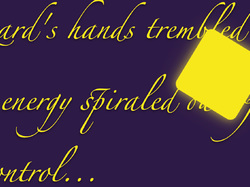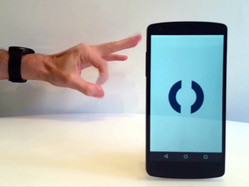Fast, visual, fun, and a hint of edge: The PEOPLE app reimagines celebrity storytelling for the habits and expectations of a new generation.
Big Medium guided product strategy and interaction design for PEOPLE’s mobile app, in close collaboration with a super-sharp innovation team at parent company Dotdash Meredith (DDM).
And wow—the app is fun! It transforms human-interest journalism into something we call atomic storytelling: it distills stories down to powerful scenes and moments, delivered in a fast-tempo, gloriously visual format. What might have been a 500-word article on the web becomes a punchy 15-second video or a four-frame storyboard. It’s rocket fuel for the celeb-obsessed: everything you need to know to be in the know.
The PEOPLE vibe runs throughout the experience, but with few words. We swept away most of the text to let images and video put you in intimate range of celebrities—through first-person accounts, backstage access, and quirky peeks into their lives. Offbeat features ask celebs whether hotdogs are sandwiches or what movie they streamed last.
“It’s really, really different, and it’s really, really awesome,” says Neil Vogel, CEO of DDM.
The content is breezy, the UX is dead easy, and the whole experience rides a ray of sunshine. But don’t mistake lightness for fluff; behind that ease is serious work and hard-earned insight into the future of media. Here’s the story behind the app.
The mission
Our brief: craft a novel, immersive storytelling experience tailored to modern behaviors and expectations. Where it made sense, we would embrace emerging technologies to reshape content by imagining a post-print, post-web world.
That all sounds very serious, but the main thing was—it had to be deliriously fun.
PEOPLE has a huge audience, and the brand is wildly successful across all age groups.[1] But it’s not as successful for younger audiences. Gen Z shows limited interest in traditional media formats from print and web—so what’s next for that audience? DDM wanted to look around the corner and build an experience tuned to the next generation’s media behaviors.
DDM also wanted to use the app to establish platform independence by fostering a direct audience relationship—one that doesn’t rely on SEO and the whims of platforms like Google, Facebook, Instagram, and others. Basically: what does a next-generation media property look like?
“It’s really about building a deeper connection with the audience,” says Leah Wyar, president of PEOPLE and Entertainment Weekly. The app “is designed for a new generation that wants a different kind of experience.”
So what makes that generation tick? Our combined team did a ton of qualitative and quantitative research on the 20–29 age group. (Huge props to DDM’s Emily Ennis, Kseniya Ivnitskaya, and Gabrielle Jamora who led the way.) We found several core themes for young—and young-minded—audiences:
- Deep skepticism of hierarchy and institutions. This group distrusts gatekeepers and news organizations—and values first-person accounts over third-person coverage. They want to see and hear it from the source.
- Extreme disinterest in text. In our research surveys of Gen Z, nearly a third said they had not read a web article in the past 90 days (!!): “I don’t want to read”; “I prefer videos or pictures”; “Articles are too time-consuming.”
- Personalities permeate. Connections and meaning are made through individuals—and mediated by opinionated POV.
- Attention is currency, and they know it. They understand that platforms want their time, and they feel the tug of the algorithm working to keep their attention.
- Skim constantly, dive occasionally. They’re like sharks in the way they swim through content—always moving, scanning, nibbling, only rarely pausing.
- Pop culture is social currency. Social connection is grounded in sharing memes, staying current, and knowing who’s who—often established in private group chat via text or social platforms.
- There has to be joy. Goals focus on fun, connection (real or virtual), and meaning—including in media consumption.
We worked hard to separate passing attitudes of youth from more lasting structural changes, and direction began to take shape.
The concept and design

All the research told us that the next generation wants what PEOPLE offers—they’re hungry for pop culture, personal stories, behind-the-scenes drama, and real moments of triumph and vulnerability. But they expect a different presentation.
This audience grew up with Snapchat, Instagram, and most recently TikTok. They expect a format that’s faster, edgier, and more personal than traditional print or web presentations. Our idea: take the established vernacular of social media and bring it to PEOPLE’s proven subject matter.
This isn’t meant to replace the website or the magazine or Apple News or social accounts or any of the many other channels where PEOPLE shows up. It’s meant to add to those channels and appeal to a new audience—by telling stories in a new way.
Atomic storytelling
Building on social-media conventions felt like a natural fit. While PEOPLE does lots of long-form storytelling, tons of their stories are based on a brief scene—a quote, a photo, a dispute, a suggestion of new romance. It’s fundamentally quick-hit content, and PEOPLE often has exclusive access to the source material.
We found that stories typically told in 500 words could be atomized into a scene of moments—video or images—and told with just enough attitude to give it the PEOPLE voice. As we began prototyping, we saw how easily PEOPLE’s content could be distilled into ultra-concentrated doses of celebrity and pop culture.
In a media landscape programmed by algorithms, populated by generated content slop, and ruled by big platforms, what remains is story, presentation, and voice. Atomic storytelling gave us quick confidence in the story and presentation part—and we soon found that it could elevate voice (and brand), too.
Art direction is back
Something strange happened when content moved from print to web: everything got poured into templates. Layouts flattened… and personality flat-lined. Across the web, every article looks the same. The rich art direction that still fills magazine pages never finds its way into web pages.
The atomic storytelling format gave us a chance to bring back art direction. The short-format, visual-first structure—combined with an open-ended data format—opened opportunities for graphic play and intentional design. We began designing “covers” for select scenes. They felt unmistakably PEOPLE… but also like something new.

Sweating the interactions
For such a seemingly simple navigation—swipe up or swipe left—it took a ton of effort and calibration to get the affordances just so.
- Subtle visual hints of the next and preceding scenes offer subliminal cues to encourage the user to swipe up and down.
- For multi-frame scenes, we tried lots of cues to swipe horizontally into the scene before landing on the classic dot indicator.
- Tap or swipe or both to move left or right? Just swipe in the end.
There were endless subtle variations and user tests to make sure it felt simple. If you use it and don’t think about it, then it worked: we did the hard work to make it feel easy.
“It’s really, really different, and it’s really, really awesome.”
—Neil Vogel, CEO of DDM
We also gave a lot of thought to what we wouldn’t do. We pared back again and again—we focused on simplicity and getting the basic mechanics right. We wanted people to sail through the app without snags.
And we did not want it to be a social network.
Social media conventions—without the social platform
Even though we were building on social media behaviors and conventions, we weren’t interested in creating a new social media platform. This wasn’t about launching a network or competing with TikTok—it was about creating a new kind of media property. A few things informed our thinking:
- The PEOPLE app is for the PEOPLE POV. The feed reflects what the PEOPLE team considers must-know in the world of celebrity. We pared the prose way back, but the PEOPLE perspective still comes through in the curation and attitude. There’s no algorithmic ordering, and no other contributors—it’s all PEOPLE, all the time, in an opinionated fixed feed.
- Shareable but not social. The content is built for sharing. Atomic scenes are easy to drop into the user’s preferred messaging platforms. We didn’t pretend we could or should replace those platforms. Instead, the app is a resource: not just for entertainment but for the social currency this generation trades in. For users, content flows out of the app—not into it.
- Finite, not bottomless. We wanted to create a daily experience, not an addictive one. The app is designed to be a regular habit—a quick check-in—not a trap for doomscrolling. There’s a lot of content, but it’s purposely finite. When you’re done, you’re up to speed—all good to move on.
With the foundation in place, Big Medium stepped out of the process. The DDM and PEOPLE teams took over the build and content production.
The result

At launch, the app is already powered by a dedicated team of nearly 70 editorial, tech, and product folks. The team can create editorial offerings that are custom-built for the format.
“We treat it like its own publication,” says DDM CEO Neil Vogel. “It’s not just a new platform—it’s a new product.”
The feed is full of stories created specifically for the app—many of which won’t appear on the website or in print. The editorial focus is sharp: celebrity, beauty, and influencer content with the lens of a younger audience.
The app is also a launchpad for original formats, including new video series made just for the app:
- The Fourth Wall is a behind-the-scenes reality show about how the biggest stories at PEOPLE come to life.
- Celeb Webs unpacks buzzy celebrity scandals.
- One Last Thing asks stars about everyday life details—their last DoorDash order, or their last Amazon purchase.
- Games and puzzles are coming soon.
So much new here. But especially: it’s a sharp new take on how an essential brand stays essential—by bending storytelling to audience, not the other way around. Big congrats to the PEOPLE and DDM teams—thanks for inviting us to help you design for what’s next.
Big Medium helps the world’s biggest companies design for what’s next through digital strategy, product design, and the smart application of AI. Find out how we can help you: Get in touch.
-
No, but seriously: People.com gets 75 million unique visitors per month. The brand has over 50 million social media followers. ↩





